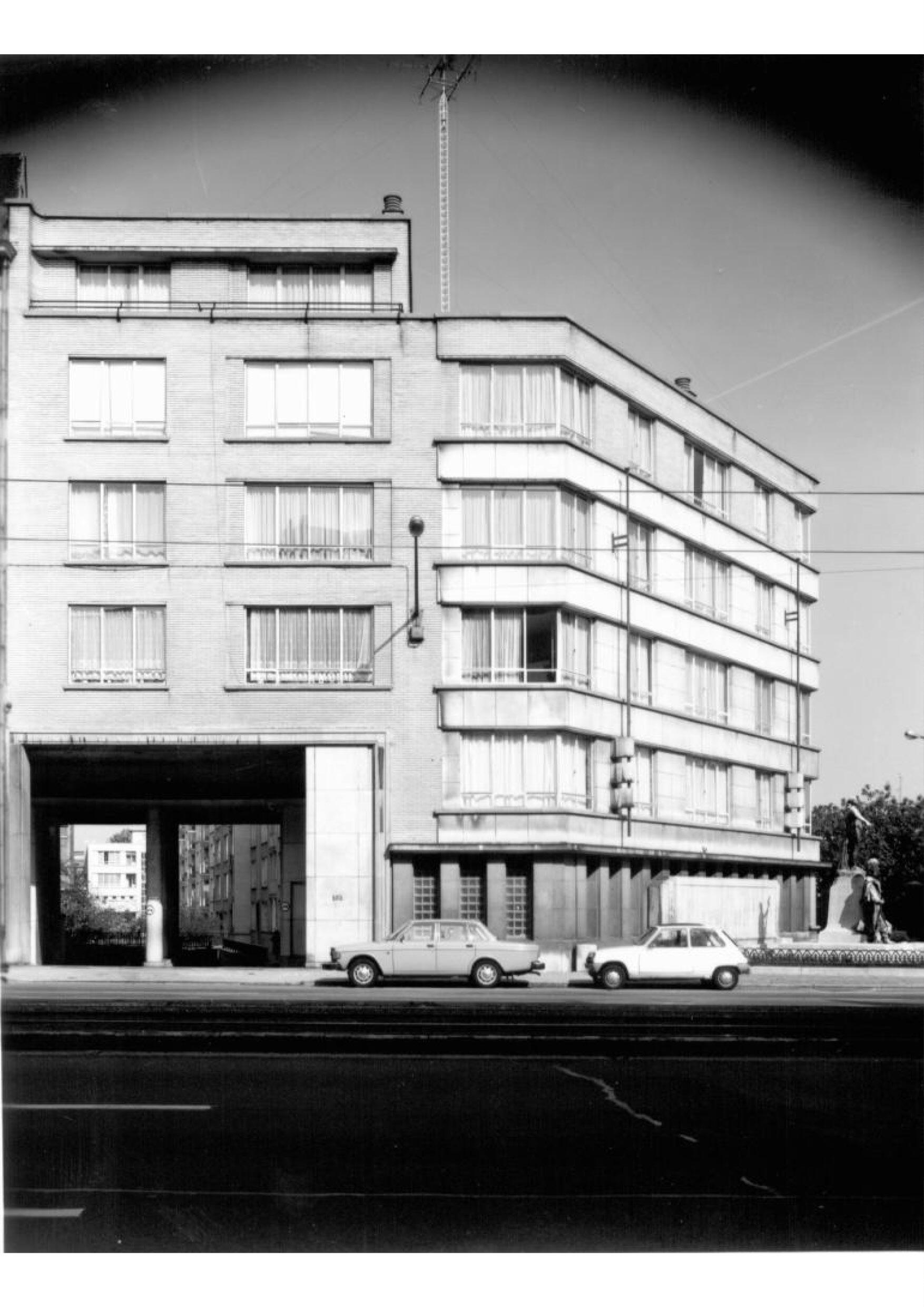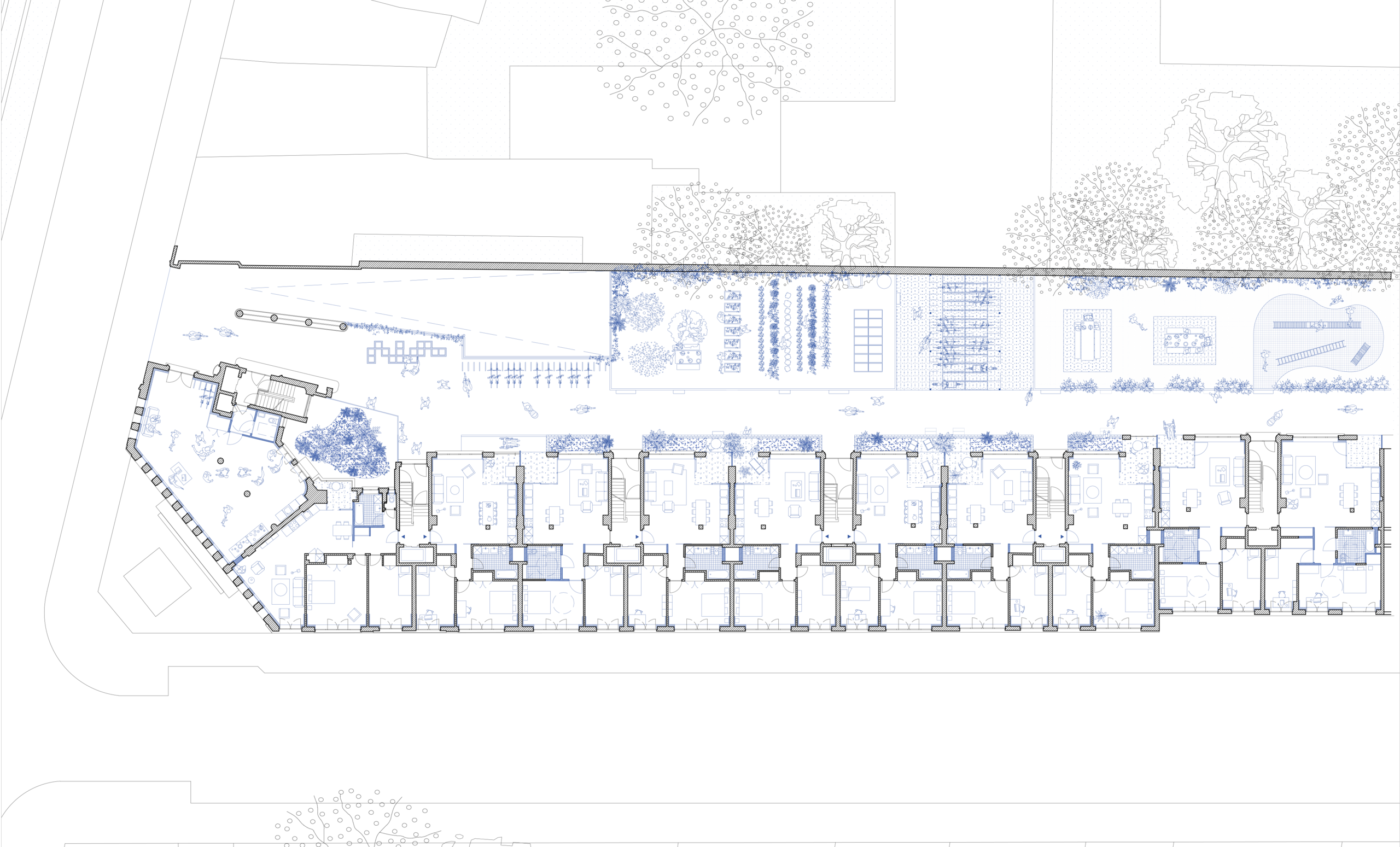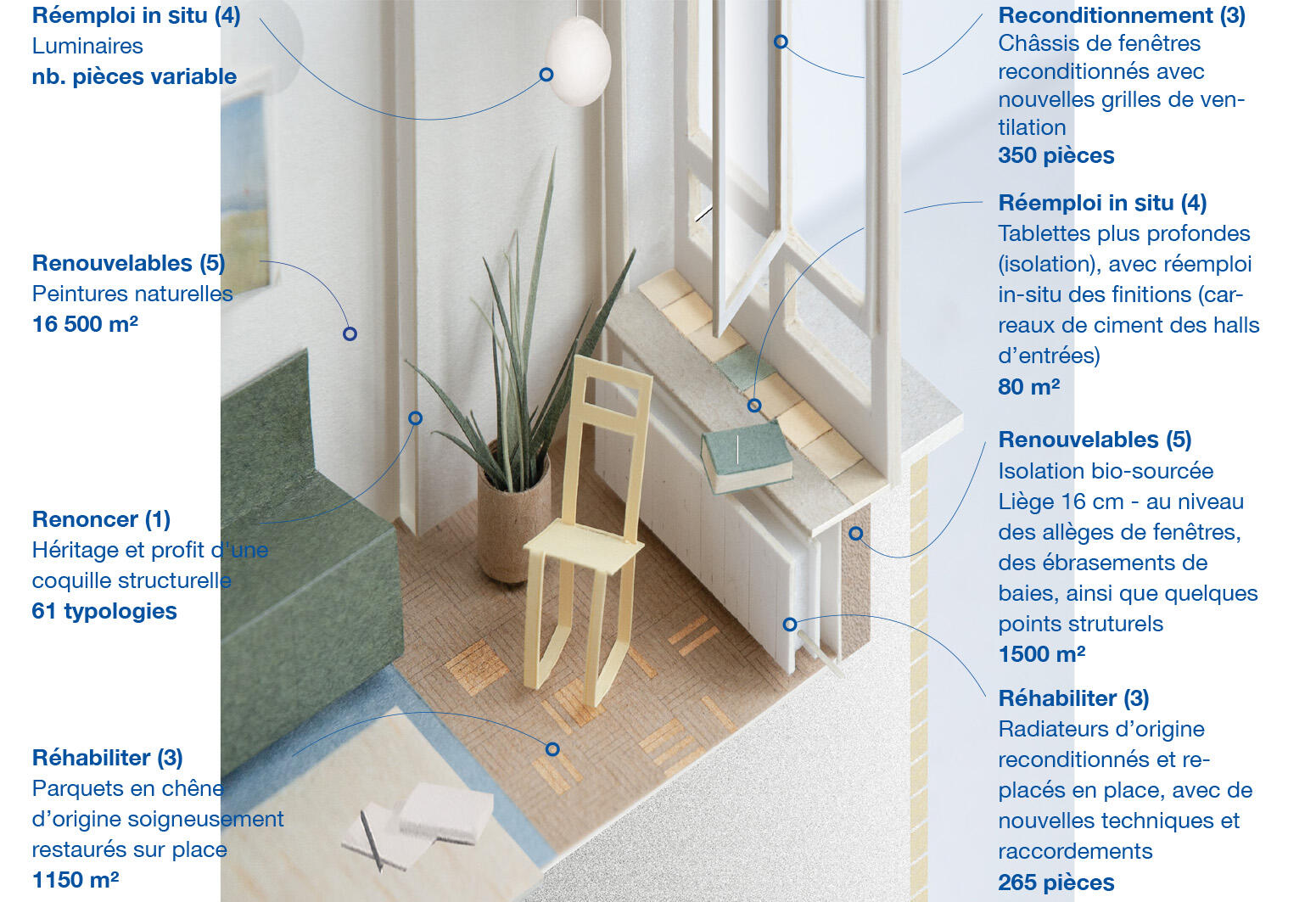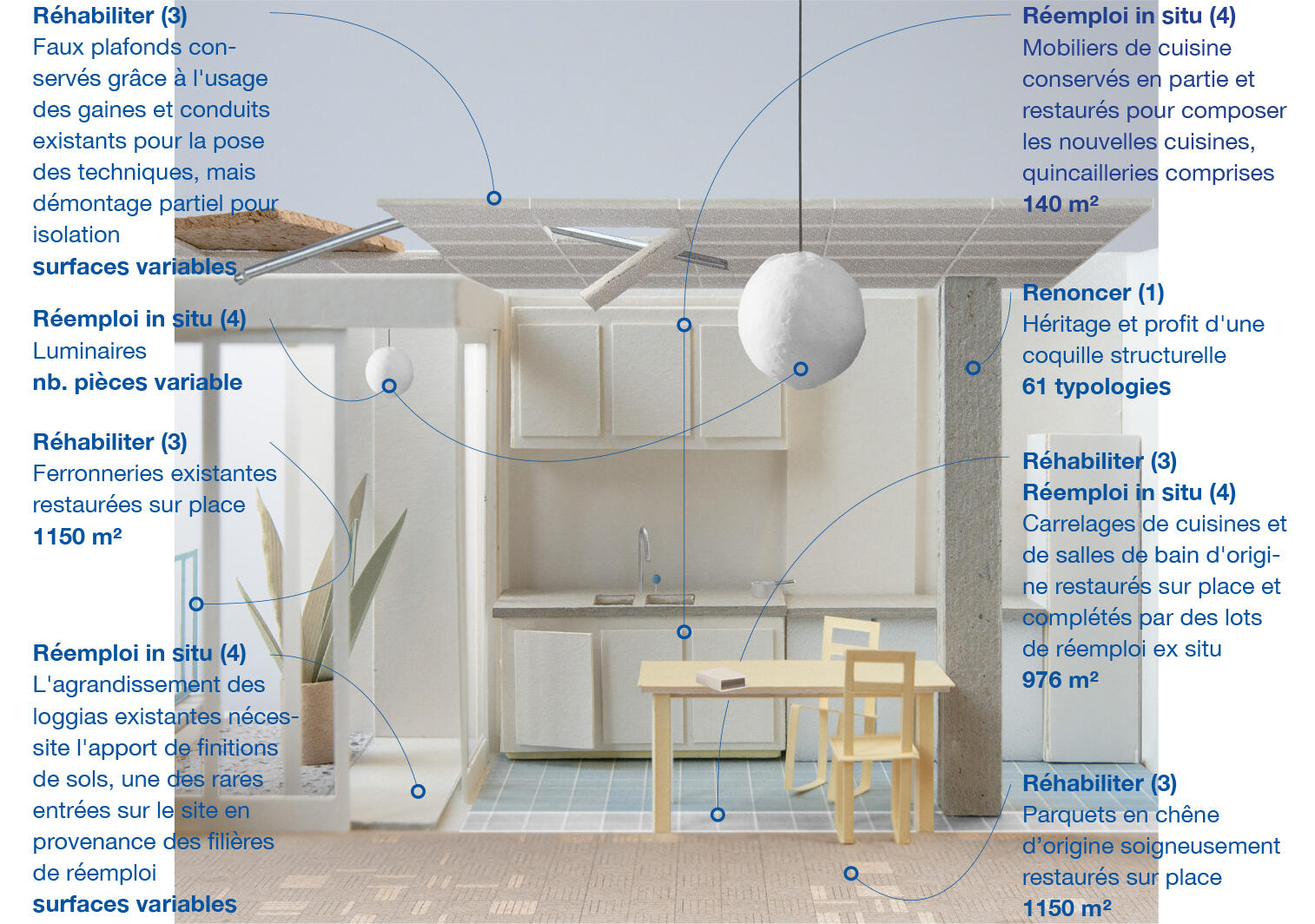362BGJ
Program
Collective housing
Location
Ixelles
Date
2020
Themes
Urban, Renovation, Circular, Biobased, Public
Phase
Ongoing
Surfaces
6300 ㎡
Team
Label, MK Engineering, Carbonifère , Ney & Partners WOW
Client
SLRB, Binhôme
Budget
€ 10 270 000
Designed to house the ‘married gendarmes’
Built in 1961 opposite the former Gendarmerie school of Ixelles (now Usquare), this building was initially designed to house the ‘married gendarmes’ who worked on the other side of the street. The building completes a housing block that was definitively closed in 1977. The curiosity of this construction lies in its inverted typology – the entrances are all located in the centre of the block via an interior alleyway – making it a continuous block along its entire length.

Maintenance as architecture
After a few years of precarious occupation – allowing for a precise inventory of all the materials – followed by a period of full-scale tests in the different types of flats, the building is now undergoing measured renovation as a pilot project in circular economy and reuse. A well-thought-out process enabling the verification of project hypotheses as the project progresses. The approach is based on K. Berghmans and B. Robles Hidalgo's formula ‘Maintenance as architecture’, asserting that instead of focusing on design and innovation, current architectural practice could be conceived as the maintenance and ‘care’ of existing buildings. This act of sobriety through the choice of targeted and thought-through interventions is an economic and environmental commitment.
A minimalist intervention
The interior renovation emphasises the crossing aspect of the flats in a rational manner by decompartmentalising the interior spaces and enlarging the loggias. The use of the apartments is more effective in a clearer ‘day/night’ repartition. In addition to this, we make use of elements that are still in good condition, such as the aluminium chassis, the built-in kitchen furniture in particular, or any type of finish or equipment that can be reused.



Limiting incoming and outgoing materials
Working within the limits of what is possible and analysing the existing qualities are at the heart of the thought process to limit incoming and outgoing materials. During the construction phase, the site acts as a platform for exchange: if the materials are not reused or diverted on-site, they are then sent to reuse channels and replaced by materials from similar circuits.



















